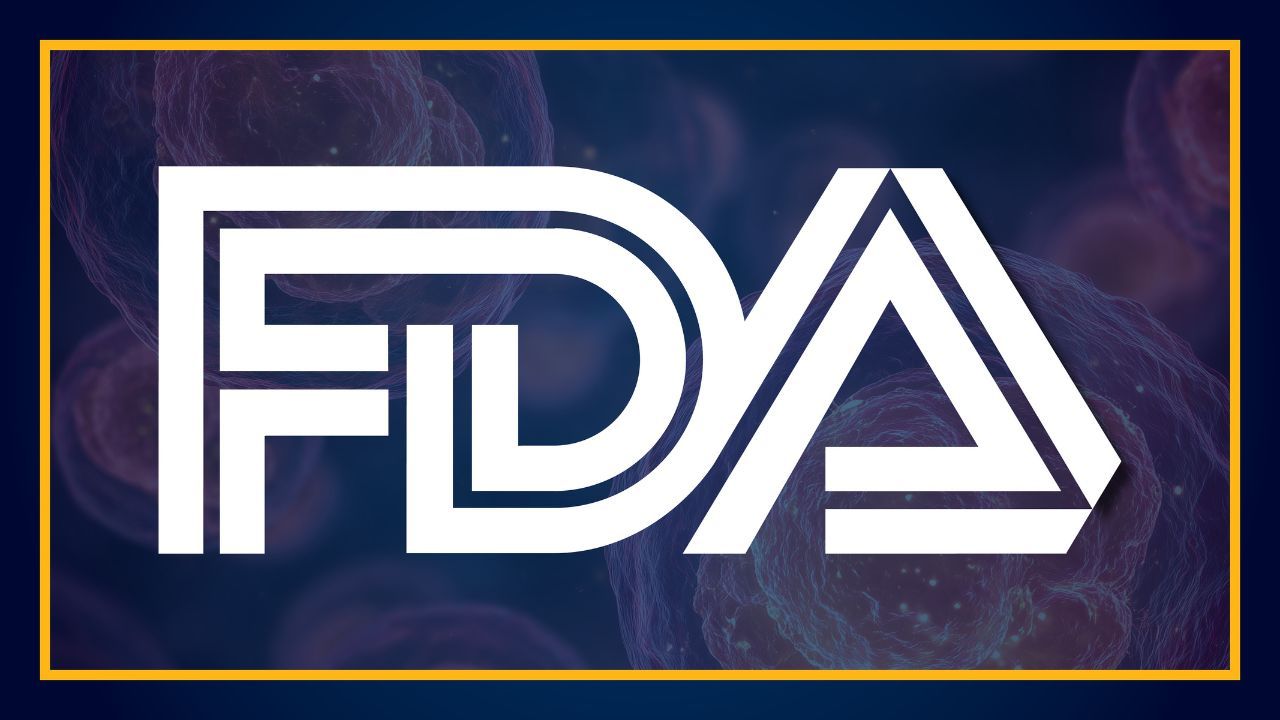The FDA has accepted and granted priority review to a biologics license application (BLA) seeking the approval of the allogeneic T-cell immunotherapy Orca-T for the treatment of select patients with hematologic malignancies, including acute myeloid leukemia (AML), acute lymphoblastic leukemia (ALL), and myelodysplastic syndromes (MDS).1
The BLA is supported by data from the phase 3 Precision-T trial (NCT04013685), which demonstrated that patients with AML, ALL, and MDS treated with Orca-T achieved a statistically significant improvement in moderate-to-severe chronic graft-vs-host disease (cGVHD)–free survival compared with those who received conventional allogeneic hematopoietic stem cell transplant (allo-HSCT).
Regarding overall survival (OS)—a secondary end point—the 1-year rates were 94% (95% CI, 86%-97%) and 83% (95% CI, 73%-90%) in the Orca-T and allo-HSCT arms, respectively (HR, 0.49; P = .11823).
The FDA has assigned a target action date for the BLA of April 6, 2026, under the Prescription Drug User Fee Act.1
“[Allo-HSCT] has been the only potentially curative option for many people with AML, ALL or MDS, however treatment-related toxicities too often hinder patient recovery. Acceptance of the Orca-T BLA marks a pivotal moment in our ability to deliver a first-in-class therapy designed to improve survival free from complications like GVHD,” Nate Fernhoff, PhD, cofounder and chief executive officer at Orca Bio, stated in a news release. “Supported by positive phase 3 clinical data, today’s regulatory milestone reflects important recognition of the transformative potential of Orca-T. We look forward to working collaboratively with the FDA on the review of our application with the goal of advancing Orca-T and making it available to patients in need.”
How Was the Precision-T Trial Designed?
The multicenter, randomized, open-label Precision-T study enrolled patients 18 to 65 years of age with acute leukemia in complete remission (CR) or CR with incomplete hematologic recovery; or with MDS that is indicated for allo-HSCT per 2017 International Expert Panel recommendations and/or therapy-related/secondary MDS, with no more than 10% bone marrow blasts.3 Patients needed to be planning to undergo a matched related or unrelated donor allo-HSCT with total body irradiation (TBI) and cyclophosphamide; TBI and etoposide; or busulfan, fludarabine, and thiotepa.
Key inclusion criteria comprised a resting cardiac ejection fraction of at least 45% or a shortening fraction of at least 27%; alanine aminotransferase and aspartate aminotransferase levels less than 3 times the upper level of normal (ULN); intermediate- or high-risk disease designation; and a total bilirubin level less than the ULN.
Investigators excluded patients who received a prior allo-HSCT, those with a planned donor lymphocyte infusion, and those with planned pharmaceutical in vivo or ex vivo T-cell depletion.
Patients were randomly assigned to receive Orca-T plus single-agent tacrolimus; or alloHSCT plus tacrolimus and methotrexate.2 In both arms, patients underwent myeloablative conditioning and used a related or unrelated matched donor.
Along with the primary end point of moderate-to-severe cGVHD-free survival at 1 year, secondary end points comprised time to moderate-to-severe cGVHD; OS; and the rate of patients free from both cGVHD and relapse at 1 year.3
What Other Data Have Been Reported From Precision-T?
Topline data also showed that the 1-year relapse-free survival rate was 76% in the Orca-T arm compared with 74% in the alloHSCT arm (HR, 0.80; P = .49).2 The cumulative rate of non-relapse mortality was 3% for patients treated with Orca-T vs 13% for those who underwent allo-HSCT. The rates of grade 3/4 acute GVHD were 6% and 17% in the Orca-T and allo-HSCT arms, respectively.
Regarding safety, no new safety issues were reported for Orca-T. Grade 4 or higher infections occurred in 6% of patients in the Orca-T arm vs 10% of patients in the allo-HSCT arm.
References
- Orca Bio announces FDA acceptance and priority review of the biologics license application (BLA) for Orca-T to treat hematological malignancies. News release. Orca Bio. October 6, 2025. Accessed October 6, 2025. https://orcabio.com/orca-bio-announces-fda-acceptance-and-priority-review-of-the-biologics-license-application-bla-for-orca-t-to-treat-hematological-malignancies/
- Orca Bio announces positive results from the pivotal phase 3 study of investigational Orca-T compared to allogeneic stem cell transplant for the treatment of hematologic malignancies. News release. Orca Bio. March 17, 2025. Accessed October 6, 2025. https://orcabio.com/orca-bio-announces-positive-results-from-the-pivotal-phase-3-study-of-investigational-orca-t-compared-to-allogeneic-stem-cell-transplant-for-the-treatment-of-hematologic-malignancies/
- Precision-T: a randomized study of Orca-T in recipients undergoing allogeneic transplantation for hematologic malignancies (Orca-T). ClinicalTrials.gov. Updated September 26, 2025. Accessed October 6, 2025. https://clinicaltrials.gov/study/NCT05316701
